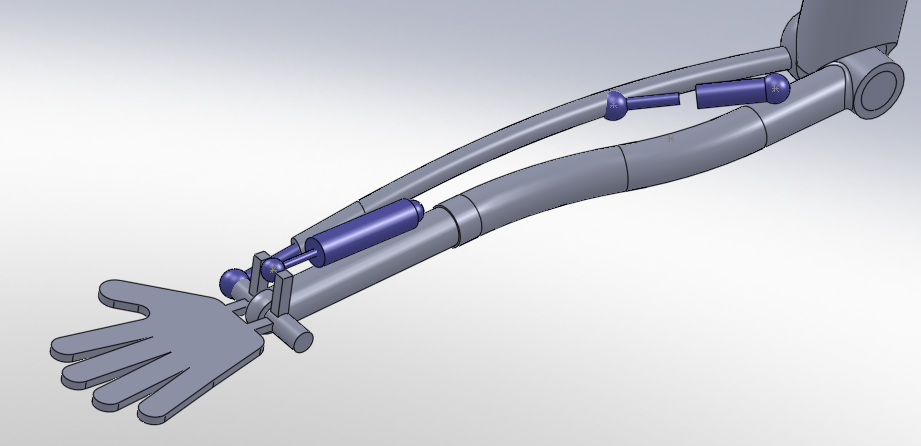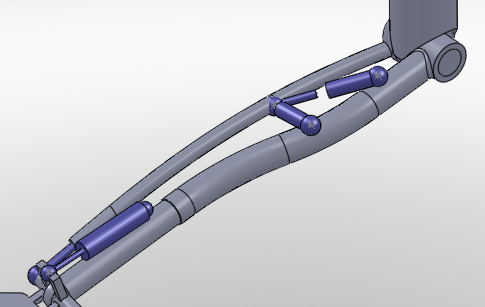In my first iteration (above), I attempted to replicate both the skeletal and muscular features of the human arm to the greatest degree possible. (Note that the hand itself has not yet been modeled so the part shown is simply a placeholder.)
To reduce complexity, the musculature for pronation and suppination was simplified to a single air cylinder between the ulna and radius. By driving this cylinder in both directions (i.e. double-acting), I hoped to both pronate and suppinate the arm. However, closer inspection of the cylinder travel throughout the twisting motion revealed that at certain angles the cylinder’s leverage would be insufficient to stabilize the rotation, and furthermore its response was very non-linear, which would cause difficulty in driving it with the controller.
Although I also investigated the use of two cylinders (see above) to retain some linearity, it seemed like the design was losing its elegance and a more robust rotation driver is needed.

